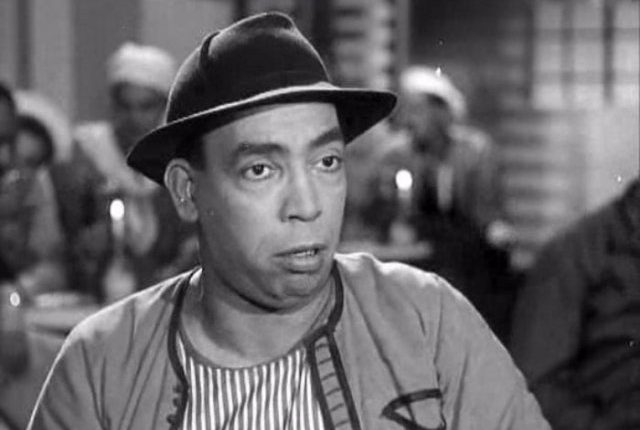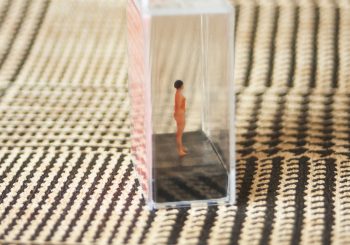A beaming grin, exaggerated hand gestures, cross-dressing, mishaps, and the occasional self-deprecating comment – these are some of the elements millions of Egyptians gathering around television were exposed to as they watched El Millioner (The Millionaire, 1950) or El Anessa Hanafi (Miss Hanafi, 1954).
Providing a respite from the business of life and an opportunity to spend time and laugh together over on-screen masterpieces: comedic productions and films of the 20th century, the golden age of Egyptian cinema, retain a special place for almost all Egyptians.
With the coming of the Egyptian cinema industry in 1896, comedy flourished as one of the most successful and prolific film genres. It focused on the socio-economic issues and misfortunes that Egyptians endured and made light of them, uniting people from all backgrounds in laughter.
The success and brilliance of Egyptian comedy cinema, of course, can be credited to the comedians who helped elevate the film industry; icons such as Abdel Moneim Madbouly, Fouad El-Mohandes, and Egyptian comedian of Palestinian descent, Abdel Salam Al Nabulsy.
As prominent as those names are, it was two other comedy actors whose jokes and acting styles earned them the title of the Charlie Chaplins of the Arab World.
Naguib El-Rihani and Ismail Yassine were two of the most dominant and eminent actors in comedic cinema during the early to mid-20th century in Egypt. While both made commentaries on socio-economic issues in their contemporary society, they are characterized considerably differently by the behaviors and roles they took on in their comical films.
Naguib El-Rihani
Born in 1889, Naguib El-Rihani is referred to as ‘The Father of Egyptian Comedy’ for his consistent ability to slyly draw out humor from phrases and words amidst tragic and pitiful affairs. He was greatly attentive to details and dialogues that enriched his various characters for the audience, as they watched the social issues of characters unravel in tragic and wretched affairs before their eyes.
He took on several film roles, such as Ghazal Al-Banat (The Flirtation of Girls, 1949) to portray the hardships of the average Egyptian worker, suffering in the face of the economy and the aristocracy.
El-Rihani’s performances were of situational ironies and dramatic tragedies, made light of with a few comical lines or gestures that highlighted the satirical circumstances of his character.
In an iconic scene in Ghazal Al-Banat, in which he stars alongside Laila Mourad and Anwar Wagdy, his character – a poor teacher employed to teach the Pasha’s daughter Arabic – visits the Pasha’s house and mistakes the immaculately dressed servants for the Pasha. In a characteristic sequence of sarcasm and snide, mocking facial expressions, El-Rihani adeptly satirizes the severe class disparities that were present in Egypt even in his days; a message shown at its clearest when he realizes the man he had mistaken for the Pasha was actually the dog-groomer.
In many of their films, both Chaplin and El-Rihani deal with the psychological insight of the poor and working class in the face of the unjust aristocrats, by parodying and criticizing the latter.
Ismail Yassine

Ismail Yassine, on the other hand, a Port Said native, and one Egypt’s most beloved actors, has less of a role in performing dark satire when addressing socioeconomic and gender issues.
Yassine – known for his humorous and entertaining performances, laid the groundwork for the light-hearted and foolish nature of comedic cinema. He began his career around 1935 and distinguished his work through his notable style of comic monologues, skits, and funny musicals. So successful was Yassine’s career in comedy that no less than 13 films feature him undertaking a variety of adventurous and experiences for comic relief: in the navy, in Damascus, encountering Frankenstein, meeting famed murderers Rayya and Skina among many others.
Yassine is famously distinguished by his comical mannerisms, like in his popular film Afritet Ismail Yassine (Ismail Yassine’s Phantom, 1954), which showcases the actor’s talent, constant humorous facial expressions and detailed quirks. The most famous of all comedy actors, Yassine is characterized for his amusing reactions to the unfortunate and absurd situations he finds himself in, as well as his quick-witted sarcasm.
A scene in Ismail Yassine fil Ustool (Ismail Yassine in the Navy, 1957), epitomizes his self-mockery. When in response to his sergeant admitting that he dislikes looking at Yassine’s face, the latter replies: “a’andek hak ya fandem, ana nafsy khel’ety msh a’agbany!” (you’re right, sir, even I don’t like seeing my face!).
Chaplin and Yassine share a clear performance trait of slapstick, as well as the tendency to find themselves in amusing situations. Yassine’s films and plays were light-hearted productions of cultural issues elevated by his comical dance moves and charming use of inflections.
To this day, El-Rihani and Yassine are actors remembered for laying the foundation for comedy, securing a reputation for comic brilliance which has been set in stone as for generations on end.
The actors’ timeless and sweepingly popular work paved the way for social realism and open social criticism in Egypt, as was later developed through literary works of Egyptian writers like Naguib Mahfouz and Yusuf Idris.






Comments (0)